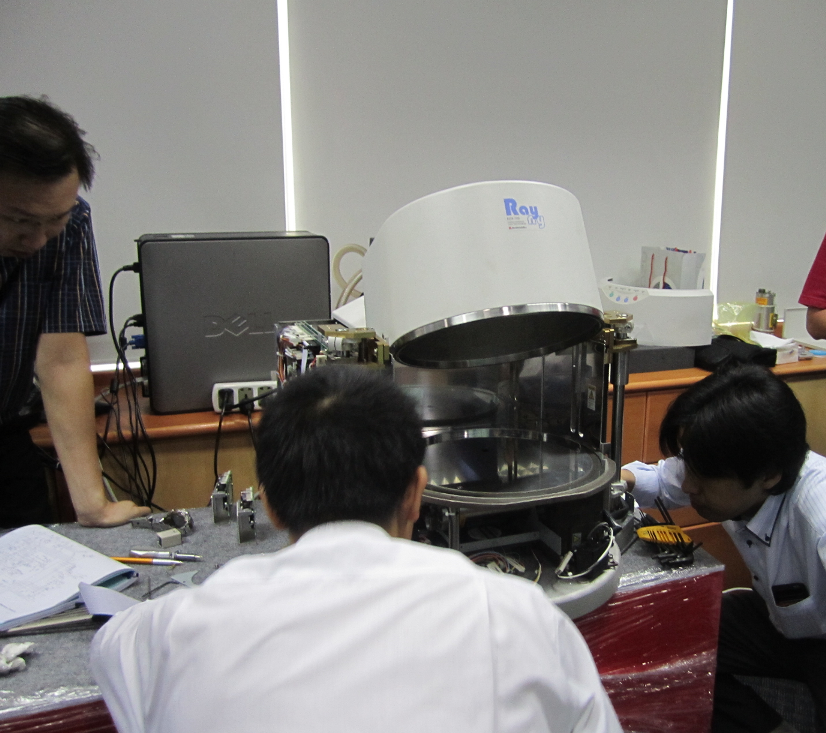News
The benefits of maintenance of machinery
In order to ensure continuous operation, the efficiency of machinery and equipment, maintenance work is an important role in maintaining the stability of the production process. However, choosing what type of maintenance that can save money while still keeping the equipment operating smoothly is a challenge for managers.
There are three usual methods used for machine maintenance:
1. Periodic maintenance.
The maintenance will be based on the manufacturer's specifications and status of equipment to provide a plan for replacing fixed machine parts.
2. Repair, maintenance after machinery / equipment occur failure: use the machine until it is damaged and only perform simple maintenance tasks such as repairing, replacing grease, repairing, reconstructing the machine after failure.
3. Maintenance by machine condition: The condition of the machine will be monitor. Only plan to stop the machine to replace, repair after make diagnosis of machine condition before the machine is damaged.
Considering to choose the maintenance method for each machine type is not easy. Because of consider should be given to factors such as how long it takes to use the machine, how it is used, how much it costs to buy machinery, etc.
Actually, indirect maintenance costs are caused by equipment failure, equipment damage, productivity losses, safety and poor working environment, etc. Much greater than maintenance costs if detected early and prevented.
A combination of machine-based maintenance and periodic maintenance, called Preventive Maintenance (PM), will help solve this problem.
Preventive maintenance (PM) is a method of maintaining balance between two factors: periodic maintenance and monitoring of equipment, PM will combine maintenance with saving device information. The purpose of PM is to “prevent” maintenance problems or failures by following routine and comprehensive maintenance procedures. The purpose is to achieve fewer, shorter, and more predictable failure.

Some advantages of PM:
- When properly PM, it generally prevents most major problems, thus reducing forced outages, “reactive maintenance,” and maintenance costs in general.
- It assures managers that equipment is being maintained.
- Extend the life cycle of equipment and spare parts for equipment.
PM does have some drawbacks:
- It is time and money consuming.
- It does not consider actual equipment condition when scheduling or performing the maintenance.
- Improper maintenance cause failure.
Despite these drawbacks, PM has proven generally reliable in the past and is still the core of most maintenance programs
In modern industrial production, preventive maintenance has been proven to help optimize costs by spending only a small amount of money and time on the benefits obtained in an indirect way when prevent failures. Furthermore, preventive maintenance will ensure the reliability of the equipment and is the core of most maintenance programs.
Source: ETA
Others
- TECOTEC GROUP ATTENDED SHIMADZU’S SERVICE MANAGER MEETING IN 2022
- TECOTEC HANDED OVER EDX-7000 X-RAY FLOURESCENCE SPECTROMETER AT NIDEC CHAUN CHOUNG VIETNAM
- INSTALLATION OF CHIP PROCESSING SYSTEM – LANNER/ GERMANY
- TECOTEC completed installation of EDX-LE Energy dispersive X-ray Fluorescence spectrometer at DYT Vina
- TECOTEC DELIVERED AND INSTALLED THE 2ND X-RAY FLUORESCENCE SPECTROMETER - EDX-LE PLUS AT TABUCHI
- TECOTEC Group has handed over PDA-7000 Optical Emissions Spectrometers for Nihon Plast Vietnam
- Bowman XRF Coating Measurement System For Electroless Nickel Plating
- TECOTEC DELIVERED AND INSTALLED SMX-2000 SYSTEM TO NIDEC TECHNO MOTOR VIETNAM



